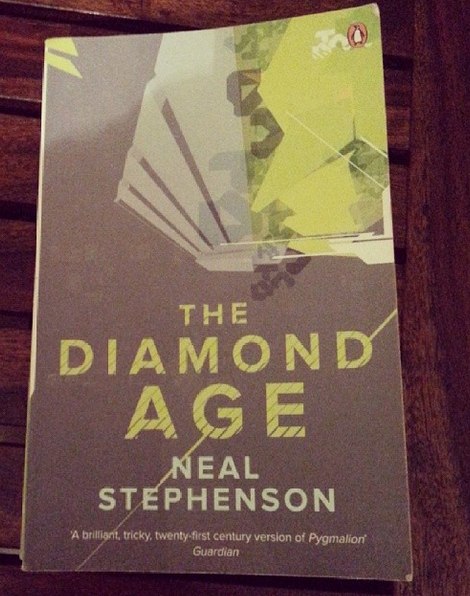Neal Stephenson
Snow Crash remains one of my favourite books in the genre, and it would only be a slight exaggeration to say that this book does for nanotechnology what the former did for the internet – give a fantastic perspective of the possibilities. I have to confess that Stephenson’s books are not the easiest to read- as anyone who has attempted The Baroque Cycle would agree to – but what I give him the most credit for is his scope of imagination. That matter compiler, (MC) which is one of the standard technologies in this book, is probably an advanced form of 3D printing, and this book was written in 1995!
From a plot perspective, there are at least two main protagonists. Nell, who escapes from domestic abuse with the help of her brother and gets a copy of the Primer, a book that adapts to the life conditions of the reader, and was originally made at the behest of an ‘Equity Lord’ for his granddaughter to propel her towards a more interesting life. (read subversive ideas) John Percival Hackworth, the architect of the Primer, who begins to be used by two separate forces to meet their own objectives. The story primarily focuses on Nell’s ‘evolution’ after she gets the Primer and Hackworth’s journey after he hands over the Primer.
It is near impossible to look at all the various themes and philosophies that have made their way into the book – from Confucianism and Victorian ethos to social classes and post-scarcity economics and from the process of education to Turing machines (artificial intelligence) and a same-but-different kind of geo-politics, the book uses a phenomenal amount of subjects. While that does lend some complexity to the narrative, I also loved the way the author has approached the human aspect of Nell. There are at least a couple of moments when the author made me realise that this was really just a young girl who was fortunate enough to get the Primer, but is essentially a lone soul in need of a companion.
The first half is probably an explosion of concepts and new ideas, and it’s easy therefore to feel that the second half is relatively underwhelming, but in his defense, Stephenson needed to carry the story forward to its logical, if a tad predictable, conclusion. It requires some amount of perseverance to balance the plot itself and the various concepts that the author comes up with (not to mention the humour – though lesser used than in Snow Crash) but if you’re willing to make the effort, this one is second only to Snow Crash itself.

